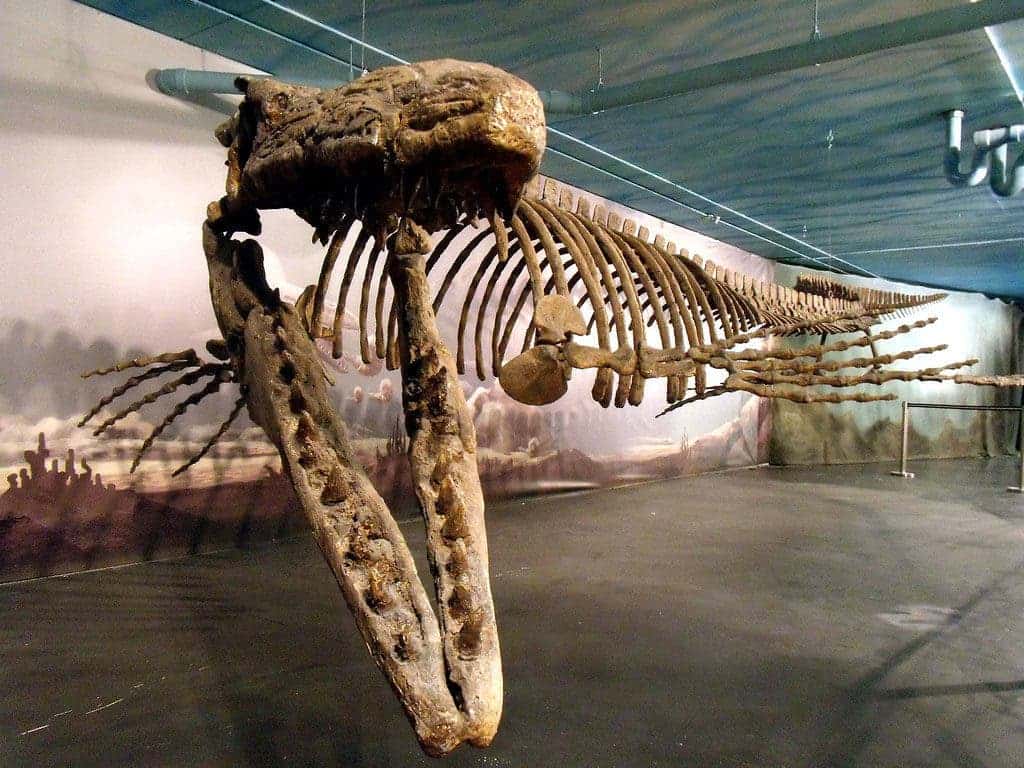Frequently described as sea monsters, the mosasaurs were marine lizards that existed during the late Cretaceous seas. They had powerful jaws, two rows of sharp teeth and could grow up to fifty feet. But, those weren’t there only advantages, according to a new study.

Research at the University of Southern California showed mosasaurs had a muscular breast stroke that may have added ambush-worthy bursts of speed, a feature unknown before.
“We know that mosasaurs most likely used their tails for locomotion. Now we think that they also used their forelimbs, or their tail and forelimbs together,” explains lead author Kiersten Formoso, a Ph.D. student in vertebrate paleontology. That dual swimming style could make mosasaurs unique among tetrapods (four-limbed creatures), living or extinct, she said.
In the past, other studies showed mosasaurs had an unusually large pectoral girdle — the suite of bones that support the forelimbs. But most assumed the creature’s swimming was mainly driven by their long tails, something like alligators or whales. That swimming style is called “cruising,” as opposed to “burst” motion.
“Like anything that swims or flies, the laws of fluid dynamics mean that burst versus cruising is a tradeoff,” said co-author Mike Habib, Assistant Professor of Anatomical Sciences at USC. “Not many animals are good at both.”
Seeking to look more at whether mosasaurs were burst-adapted, cruise-adapted or a balance of both, Formoso and her team focused on the oversized pectoral girdle. They studied a fossil Plotosaurus, a type of mosasaur, and used measurements of mosasaur pectoral girdles published in other studies.
The study determined that the mosasaurs’ unusually large and low-placed pectoral girdle supported large muscle attachments. In addition, asymmetry in the bone structure is a telltale sign of the strong, inward, pull-down motion called adduction. This suggests that mosasaurs used their forelimbs to swim, breast-stroke style, adding powerful bursts of propulsion to their ability to cruise.
For the team, the next step will be to model bone structure, morphology, measurements, and fluid dynamics (such as drag) to learn exactly how, and how fast, these sea monsters swam. Along with applications to biomechanics, and even robotics, the study also sheds light on how evolution and ecosystems are affected by fluid dynamics.
Formoso and the rest of the team pointed out that it’s a challenge to study kinematics on extinct animals, considering that the subjects are missing flesh, skin, and many bones. But, one thing is nearly certain, she said. “Mosasaurs swam unlike anything else.”









